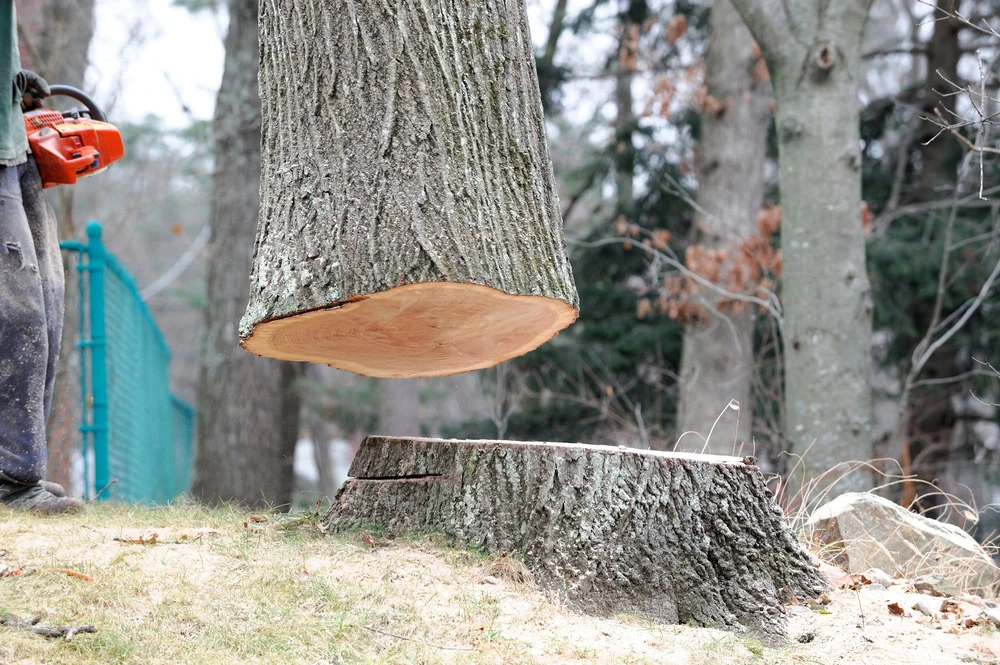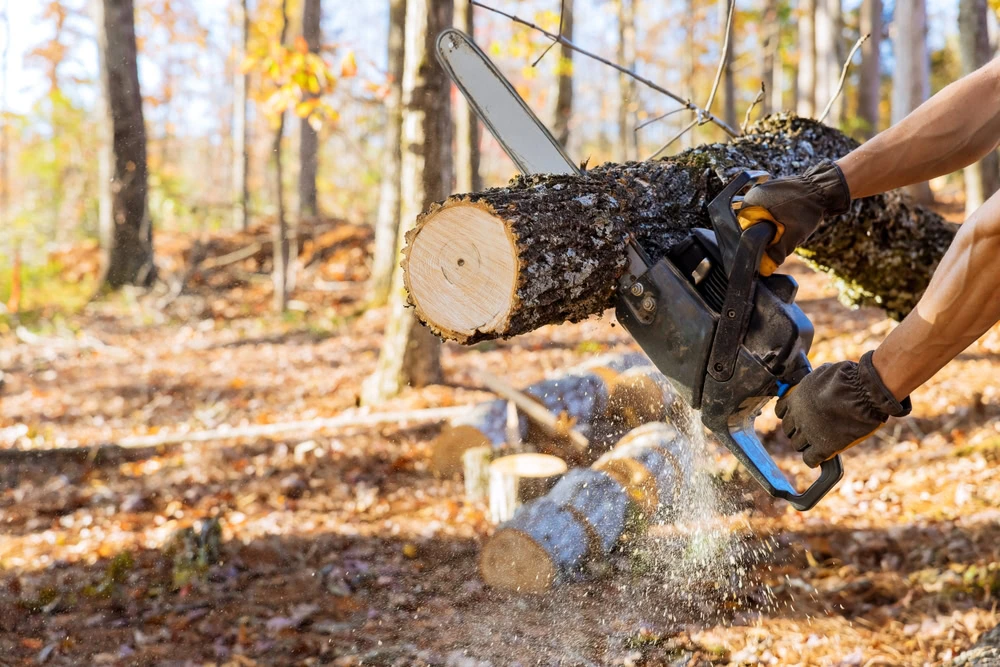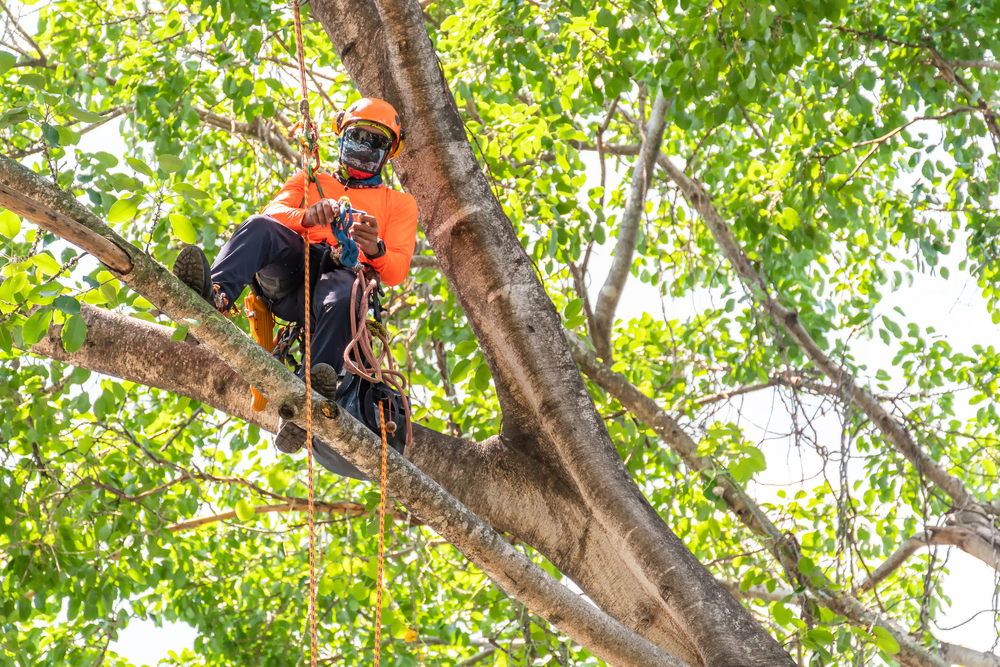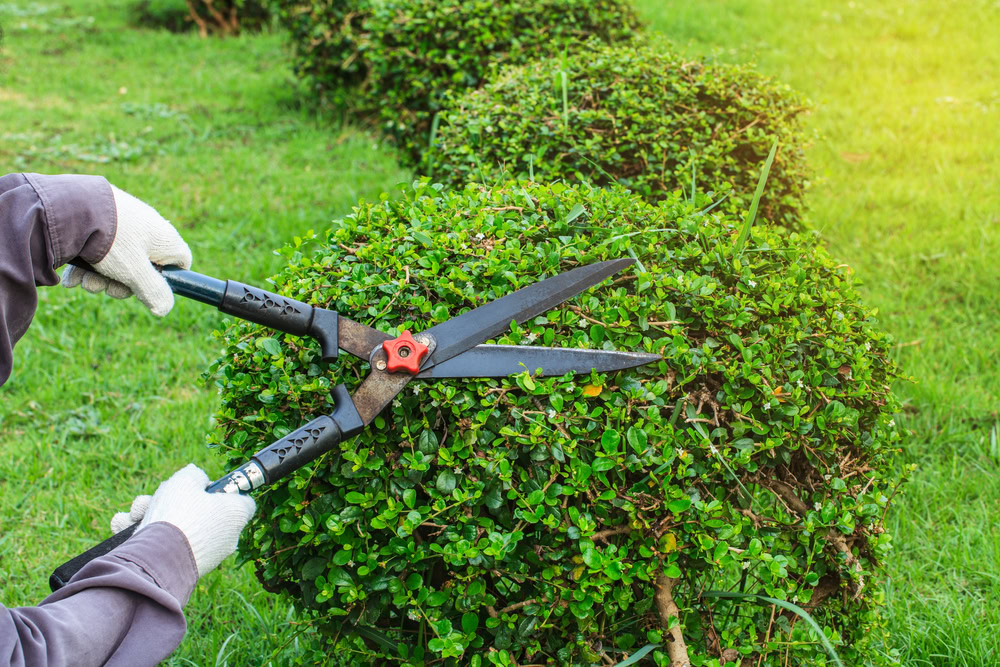Understanding Tree Removal Costs in Suffolk County, NY
Size and Height of the Tree
The size and height of a tree are major factors in determining the cost of removal. Smaller trees, typically under 30 feet, are easier and cheaper to remove, costing between $150 and $500. These trees require less time and equipment, making the process straightforward.
Medium-sized trees, ranging from 30 to 60 feet, are more complex and cost between $200 and $1,000. These trees need more careful handling, additional manpower, and possibly specialized equipment to ensure safe removal.
Large trees, over 60 feet tall, can cost from $800 to $2,000 or more. These removals are challenging due to the tree’s size and potential proximity to structures or power lines. They often require cranes and extensive planning to safely take down the tree without causing damage. Knowing how tree size impacts cost helps you budget for tree removal more accurately.
Tree Health and Condition
The health and condition of the tree also affect removal costs. A healthy tree is generally less expensive to remove because it is stable and poses fewer risks. In contrast, a tree that is diseased, dying, or dead is more hazardous and costly to remove.
Diseased or dead trees can be unstable, increasing the risk for workers and requiring special precautions. These trees might need to be secured with ropes or taken down in smaller sections to prevent sudden collapses, which can increase costs by 25-50%. Additionally, if the tree has pests or diseases that could spread, safe disposal methods are necessary, further raising the cost. Assessing the tree’s health before removal is crucial for an accurate cost estimate.
Location and Accessibility
The tree’s location and accessibility significantly influence removal costs. Trees in open areas with easy access are cheaper to remove because they allow for straightforward equipment use and movement of the crew.
Trees near buildings, power lines, or other structures require extra care and precision. These situations might necessitate rigging techniques or the use of cranes to safely lower branches and trunk sections, increasing the cost. Trees in hard-to-reach areas, such as a backyard with narrow access, can also be more expensive to remove due to the added time and effort needed to navigate obstacles. Understanding how location affects removal helps you prepare for potential extra costs.
Stump Removal and Grinding
Once a tree is removed, the remaining stump needs to be addressed. Stump grinding, which involves grinding the stump down to below ground level, typically costs between $100 and $400. This method is effective and leaves the area ready for replanting or landscaping.
Complete stump removal, including the extraction of the roots, is more labor-intensive and can cost between $200 and $600. This process might be necessary if you plan significant landscaping changes or want to ensure no roots are left behind. Removing the stump prevents pest infestations, eliminates tripping hazards, and improves the overall appearance of your yard. Including stump removal in your budget is important for a complete job.
Emergency Tree Removal
Emergency tree removal services are typically more expensive due to the urgency and potential hazards. If a tree has fallen and is blocking a road or damaging a structure, immediate removal is needed, often at a premium price.
Emergency services can cost 1.5 to 3 times more than standard removal because of the need for rapid response and specialized equipment. The crew must work quickly and safely to prevent further damage or hazards, which justifies the higher cost. Adverse weather conditions, such as storms or high winds, can also complicate the process. Choosing a reliable company like Green Light Tree Services ensures prompt and professional emergency tree removal.
Additional Costs and Considerations
Several additional factors can influence the total cost of tree removal. Permits may be required for large or heritage trees, adding to the expense. Always check local regulations to understand any legal requirements.
Cleanup and disposal fees should also be considered. Some companies include these costs in their estimates, while others charge extra for removing debris. This can add a few hundred dollars to the final bill, especially for large trees.
If you want the tree processed into firewood or mulch, there might be additional charges. These services are beneficial if you plan to use the wood but will increase the overall cost. Always ask for a detailed quote to understand all potential expenses and ensure there are no surprises. Consulting with a professional service like Green Light Tree Services provides a comprehensive quote covering all aspects of the job.





